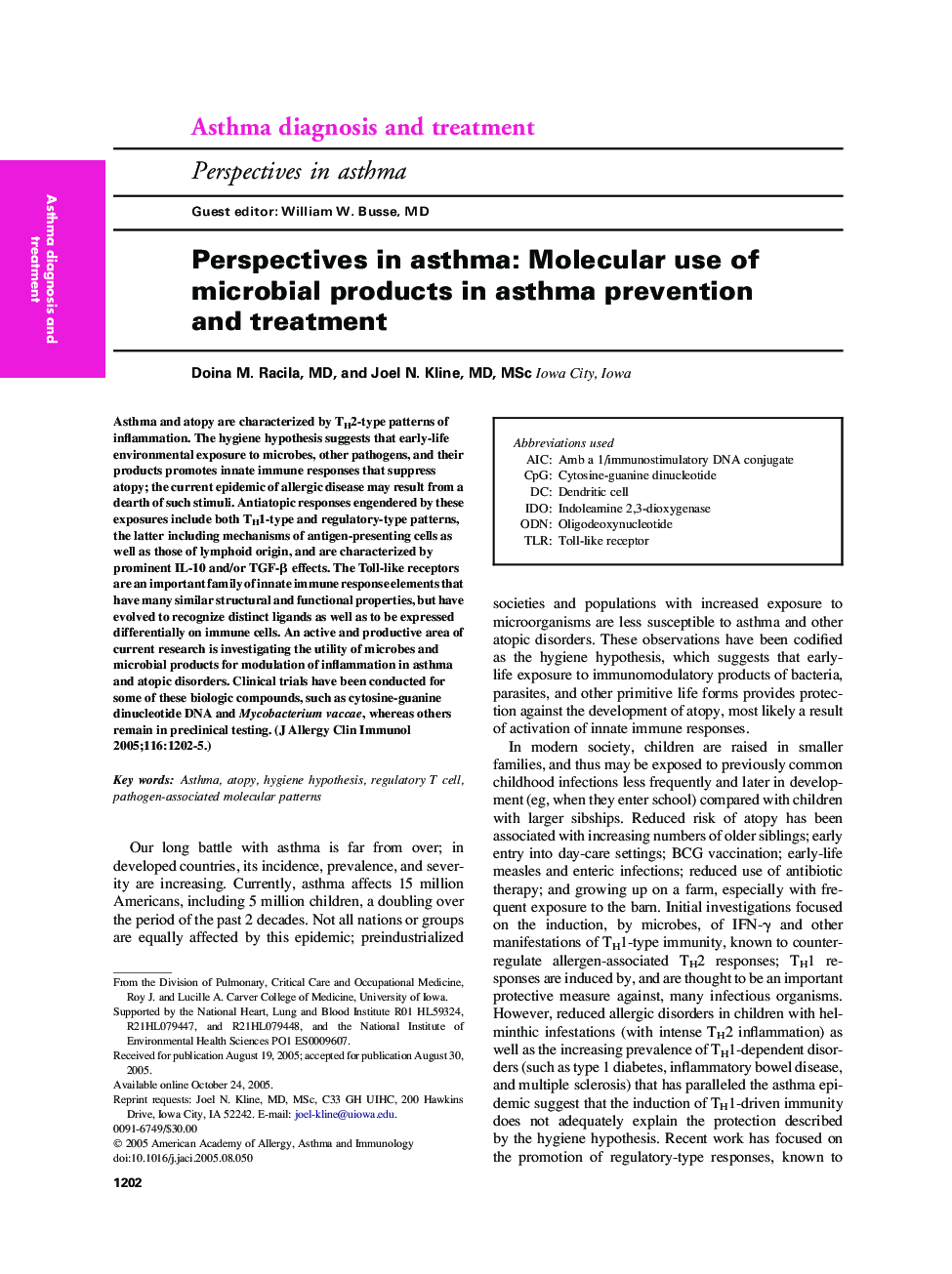| Article ID | Journal | Published Year | Pages | File Type |
|---|---|---|---|---|
| 9226271 | Journal of Allergy and Clinical Immunology | 2005 | 4 Pages |
Abstract
Asthma and atopy are characterized by TH2-type patterns of inflammation. The hygiene hypothesis suggests that early-life environmental exposure to microbes, other pathogens, and their products promotes innate immune responses that suppress atopy; the current epidemic of allergic disease may result from a dearth of such stimuli. Antiatopic responses engendered by these exposures include both TH1-type and regulatory-type patterns, the latter including mechanisms of antigen-presenting cells as well as those of lymphoid origin, and are characterized by prominent IL-10 and/or TGF-β effects. The Toll-like receptors are an important family of innate immune response elements that have many similar structural and functional properties, but have evolved to recognize distinct ligands as well as to be expressed differentially on immune cells. An active and productive area of current research is investigating the utility of microbes and microbial products for modulation of inflammation in asthma and atopic disorders. Clinical trials have been conducted for some of these biologic compounds, such as cytosine-guanine dinucleotide DNA and Mycobacterium vaccae, whereas others remain in preclinical testing.
Keywords
Related Topics
Life Sciences
Immunology and Microbiology
Immunology
Authors
Doina M. MD, Joel N. MD, MSc,
